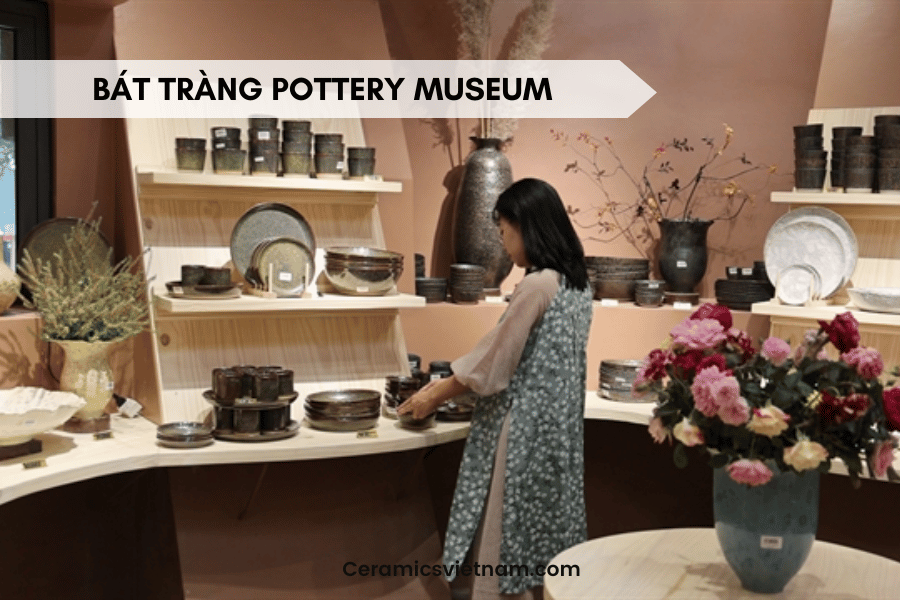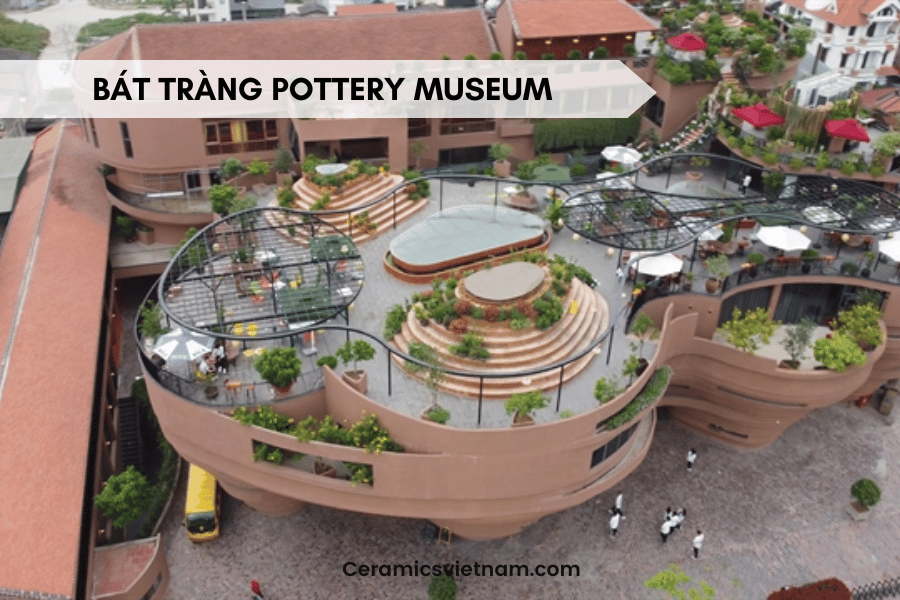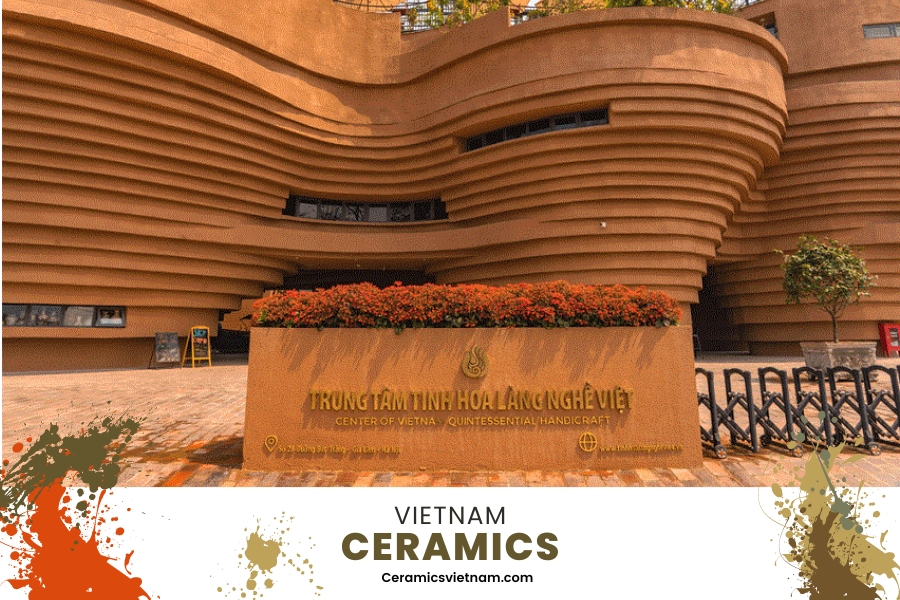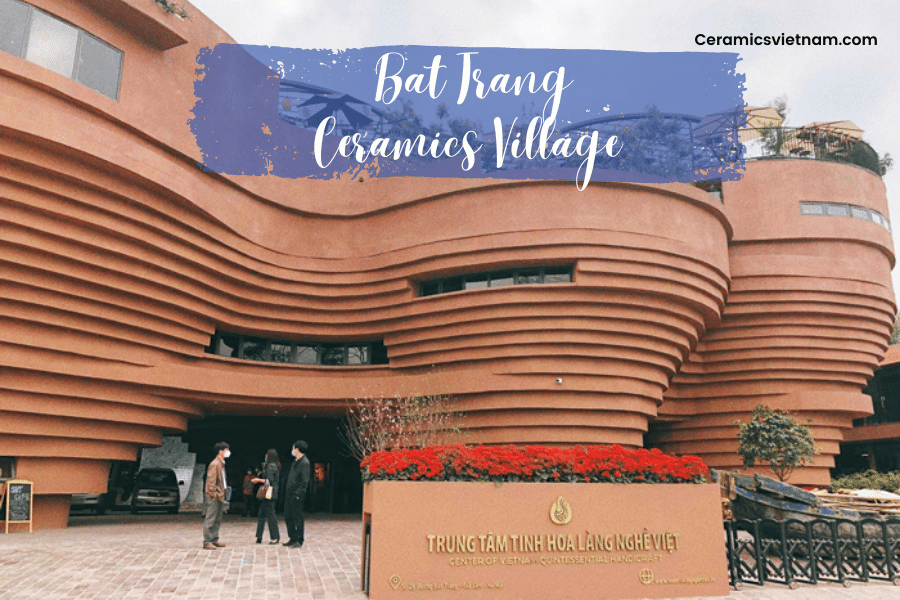Nestled in the heart of Vietnam, the Bat Trang Pottery Museum stands as a captivating testament to the rich cultural heritage and artistic prowess of the nation. This review aims to unravel the intricacies and magnificence of the museum, portraying it as a true masterpiece that not only showcases the exquisite craftsmanship of Bat Trang pottery but also serves as a guardian of the profound essence embedded in the Vietnamese soil. As we embark on this journey through the museum’s halls, we discover a captivating narrative of tradition, innovation, and the enduring spirit of Vietnam’s artistic legacy.
Bat Trang pottery village

Review of Bat Trang Pottery Museum: A masterpiece preserving the soul of Vietnamese soil
Nestled on the banks of the Red River just outside of Hanoi, Bat Trang Pottery Village stands as a living testament to the rich heritage and age-old craftsmanship of Vietnam. Renowned for its traditional ceramics that date back centuries, Bat Trang has become a symbol of the country’s artistic prowess and cultural legacy.
The Red River (also known as Cai River, Ca River, Thao River, Nhi Ha, Nhi Ha River) is a river with a total length of 1,149 km. Originating from Yunnan, China, it flows through Northern Vietnam and empties into the Gulf of Tonkin, covering a distance of 556 km within Vietnam.This river holds significant cultural importance in the context of Vietnam’s rice cultivation heritage.
The river is commonly referred to as the Red River (瀧紅 in Nôm script) or Hong Ha (紅河 in Chinese characters), owing to its light red color. Another name for the river is the Cai River (French influence led to the name Song-Koï, though the term Fleuve Rouge is more commonly used by the French), emphasizing the Red River’s role as the origin of Vietnam’s wet rice civilization. The section flowing within Chinese territory is called the Yuan Jiang (元江, pronounced as yuan2 jiang1), and its upper reaches are known as Le Xa Giang (禮社江).
This historic pottery village, believed to have been established in the 14th century, has witnessed generations of skilled artisans honing their craft and passing down their expertise through familial lineages. Today, Bat Trang is not merely a village but a thriving community dedicated to the art of pottery, drawing visitors from far and wide to explore its winding streets and witness the magic of hands shaping clay into exquisite works of art.
The unique charm of Bat Trang lies not only in its centuries-old pottery techniques but also in the seamless blend of tradition and innovation. While preserving the authenticity of ancient methods, the village has embraced contemporary designs and styles, creating a dynamic and evolving landscape within the world of ceramics.
Visitors to Bat Trang are invited to immerse themselves in the rhythmic dance of pottery wheels, explore the countless workshops lining the narrow lanes, and admire the diverse array of handcrafted ceramics on display. From intricately designed vases to functional kitchenware, Bat Trang’s creations reflect the fusion of artistic expression and utilitarian purpose.
As we embark on a journey through Bat Trang Pottery Village, we delve into a world where the echoes of history resonate in the hands of skilled artisans, shaping clay into timeless pieces that encapsulate the essence of Vietnamese culture.
Bat Trang pottery museum: Address, opening hours & transportation

Review of Bat Trang Pottery Museum: A masterpiece preserving the soul of Vietnamese soil
Have you discovered the location of Bat Trang Pottery Museum yet? Situated on a spacious area at 28, Hamlet 5, Bat Trang Commune, Gia Lam District, Hanoi, the museum is approximately 19 km away from the city center, taking around 40 minutes by car. Not only is the route convenient, but there are also various transportation options to reach this destination.
By motorcycle: Starting from Hanoi’s city center, head towards Chuong Duong Bridge, then proceed straight on Long Bien – Xuan Quan Road. Here, you’ll find signs directing you to the pottery village. If you encounter difficulty finding your way, don’t hesitate to ask locals for guidance.
By bus: In addition to personal vehicles, you can opt for bus transportation. Here are some bus routes with stops near Bat Trang Pottery Museum: 47A, 47B, 08A, 08B, 34, 40, 31.
Regarding operating hours, Bat Trang Pottery Museum opens its doors from 8:00 AM to 5:30 PM (Monday to Friday) and from 8:00 AM to 6:00 PM (Saturday and Sunday).
Bat Trang pottery museum ticket prices 2024:
- Entrance ticket and exploration of the pottery space on floors 1, 2, 4: 50,000 VND/person.
- Admission to the contemporary art center CHON | DEL’ART on the 3rd floor: 90,000 VND/person, free for children under 1m3.
- Experience ticket for pottery molding by artisans with a product to take home: 70,000 VND/adult and 50,000 VND/child under 1m3.
- Hương Sa Art House Tea Meditation Ticket: 90,000 VND/person, free for children under 1m3.
- Combo Ticket 1: 189,000 VND/person. Includes: enjoying light sculpture art + visiting the contemporary art center + exploring Bat Trang pottery space + Potter’s Square + Artisan pottery experience.
- Combo Ticket 2: 249,000 VND/person. Includes: enjoying light sculpture art + dining at Tinh Hoa restaurant + visiting the contemporary art center + exploring Bat Trang pottery space + Potter’s Square + Artisan pottery experience.
What makes the Bat Trang ceramic museum appealing?

Review of Bat Trang Pottery Museum: A masterpiece preserving the soul of Vietnamese soil
The Bat Trang Ceramic Museum in Hanoi, also known as the Essence Center of the Vietnamese Craft Village, is a creation of the 15th generation of the pottery-making lineage with a long history in Bat Trang, led by Ms. Ha Thi Vinh. The museum was constructed with the purpose of honoring the pottery craft of the homeland, simultaneously preserving and conserving the cultural essence of the craft village, which has gradually faded with time. Here, a variety of services are offered, including exhibitions, displays, tours, shopping, leisure, and auctions.
Architecture inspired by the unique “Potter’s Wheel”
Bat Trang Pottery Museum is a grand architectural masterpiece with a remarkably beautiful and unique design. The structure is crafted from soft, flowing curves that intricately interconnect to form seven gigantic swirling spirals. This architectural marvel draws inspiration from the familiar “potter’s wheel” that has been an integral part of the pottery village for centuries. The museum is designed in a descending manner, starting small at the bottom and gradually increasing in size, yet it still imparts a sense of solidity and strength.
To create these distinctive seven spirals, artisans employed thin, linear reinforced concrete that offers both a minimal load and effective load-bearing capacity. This monumental structure also incorporates various traditional materials from Bat Trang Pottery Village, such as mosaic glazed tiles, ancient ceramic bricks, and kiln packaging materials, to produce authentic and vibrant colors.
Floor 1 – Attraction with exquisite pottery stalls
Floor 1 encompasses the ceramic square seamlessly connected to the Bac Hung River. Designed as an open space, Floor 1 at Bat Trang Pottery Museum serves as a showcase for the exquisite ceramic artworks crafted by the skilled artisans of the pottery village. This area is also frequently utilized for organizing cultural activities such as performances, festivals, fairs, and traditional cultural programs.
Floor 2 – Recreating the ancient and modern Bat Trang Pottery village
On Floor 2 of Bat Trang Pottery Museum, there is a display area showcasing artworks closely tied to the developmental phases of the pottery village throughout different periods. Simultaneously, it recreates familiar images associated with the pottery craft. To delve into intriguing knowledge about the ancient Bat Trang Pottery Village and appreciate artistic creations spanning from the past to the present, visitors can explore the space on Floor 2, moving from left to right.
Floor 3 – Contemporary Art Center
Floor 3 at Bat Trang Pottery Museum is an exhibition space filled with artistic flair and is highly favored by many visitors. Here, guests can immerse themselves in ceramic artworks ranging from contemporary to modern, clearly sensing the continuous innovation of the Bat Trang Pottery Village across different eras. Particularly noteworthy, visitors not only have the opportunity to admire but can also purchase or participate in auctions for these artistically rich products.
Floor 4 – Ultimate Chill-out Space for Visitors
Floor 4 is a dedicated relaxation and dining area for visitors. This space at Bat Trang Pottery Museum features the Royal Hall, a restaurant area, and an outdoor café with a luxurious view. Visitors can enjoy delicious dishes while admiring the breathtaking scenery. Many tourists come here to capture Instagram-worthy shots and explore picturesque views. The café at Bat Trang Pottery Museum also offers event organizing services for parties or birthdays, featuring a diverse menu and a proactive staff ready to assist.
Floor 5 – Tea Appreciation & Light Sculpture Art
Floor 5 of Bat Trang Pottery Museum is a space for tea appreciation, event hosting, and regular folk art and cultural activities. Visitors to this floor can attend various cultural events, witness traditional pottery artisans’ product displays, and enjoy folk art performances such as ceremonial singing, traditional opera, and folk songs.
Floor G – Where Visitors Transform into Ceramic Artisans

A masterpiece preserving the soul of Vietnamese soil
Floor G is the space where visitors can immerse themselves in the role of a skilled ceramic artisan. Here, all the necessary tools are provided for visitors to personally create their own ceramic products. Both adults and children can become hands-on artisans, receiving guidance on the meticulous process of crafting ceramic items.
Tourist attractions around Bat Trang Pottery Village museum
Bat Trang Pottery Museum attracts many visitors not only for its unique design but also due to the many other interesting attractions surrounding the museum. After exploring the pottery museum, visitors can head to the following tourist spots to further discover and enjoy:
- Bat Trang Ceramic Village: 650 meters from Bat Trang Pottery Museum.
- Mua Ha Ecopark: 2.5 kilometers from Bat Trang Pottery Museum.
- Rose Park: 6.2 kilometers from Bat Trang Pottery Museum.
Hanoi not only offers appealing entertainment areas in the suburbs but also has numerous exciting spots within the city. A notable example is VinKE & Vinpearl Aquarium at Vincom Mega Mall Times City.
Vinpearl Aquarium Times City is the first aquarium in Hanoi featuring an underwater tunnel. With a total area of up to 4000m2, the aquarium is divided into three distinct ecological zones on separate floors. The freshwater zone is designed to resemble the Amazon rainforest, housing rare freshwater species such as seahorses and freshwater white sharks. The reptile cave zone features various reptiles, amphibians, and unique insects such as Komodo dragons, monitor lizards, and emperor scorpions. Finally, the saltwater zone resembles the vast ocean with over 30,000 diverse marine creatures.














Leave a reply